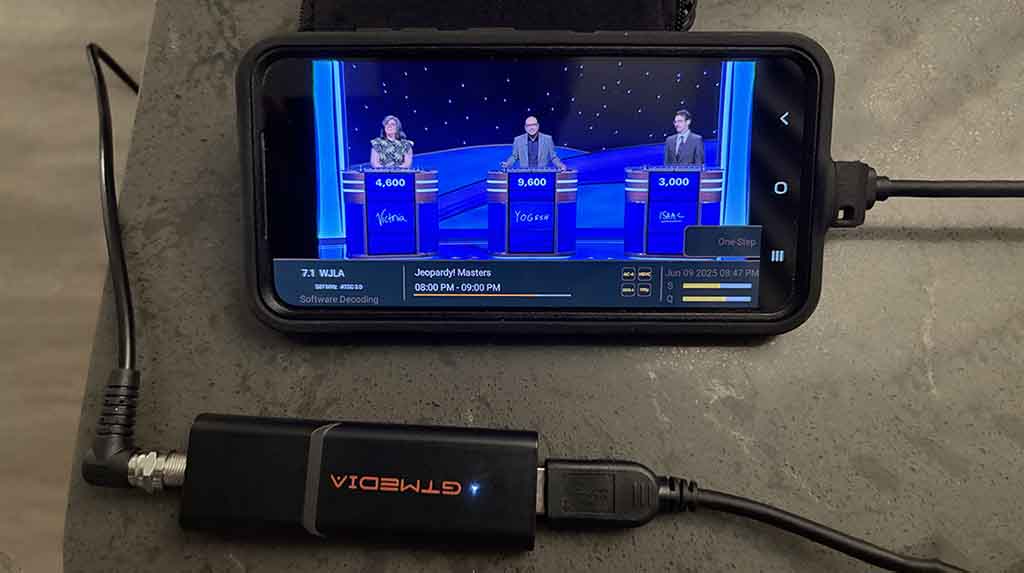ATSC Does Interactive TV Demonstration Project
The ATSC Planning Committee has undertaken a major demonstration project of the Advanced Common Application Platform interactive TV system. Led by Jon Dakss of NBC Universal, the project is designed to illustrate how ACAP can be used to enhance viewing. Other members of the organizing committee include Glenn Reitmeier of NBC, Jimmy Goodmon of Capitol Broadcasting, Wayne Luplow from Zenith, Sterling Davis of Cox Broadcasting, the NAB's Graham Jones and Mark Richer of the ATSC.
The ACAP specification, developed as the result of a harmonization effort between the ATSC DTV Application Software Environment, or DASE, and CableLabs' Open Cable Application Platform specifications, is the culmination of an extensive effort by a dedicated team of specialists from dozens of organizations representing diverse industry segments.
ACAP enables advanced interactive services while providing content providers, broadcasters, cable and satellite operators, and consumer electronics manufacturers with the technical details necessary to develop interoperable services and products. The rollout of the digital television infrastructure facilitates a new era in service built around two-way interactive technologies. Two worlds that were once barely connected--television and the Internet--are now on the verge of combining into an entirely new service: namely, interactive television. Thanks to the ongoing transition of television from analog to digital, it is now possible to efficiently combine video, audio, and data within the same signal.
This combination leads to powerful new applications. For example, computers can be turned into traditional TV receivers and digital set-top boxes can host applications such as interactive TV, e-commerce, and customized programming.
The term "interactive television" is broad and not entirely well defined. However, it certainly includes the following general categories:
- Customized news, weather and traffic
- Stock market data, including personal investment portfolio performance in real-time
- Enhanced sports scores and statistics on a selective basis
- Games associated with programs
- On-line real-time purchasing of everything from groceries to software without leaving home
- Video-on-demand
There is no shortage of reasons why iTV is viewed with considerable interest around the world. The backdrop for iTV growth comes from both the market strength of the Internet and the technical foundation that supports it.
With the rapid adoption of digital video technology in cable, satellite, and broadcasting, the stage is set for creating an iTV segment that introduces a whole new range of possibilities to a mass consumer market.
For example, technologies are available that support interactive features for game shows, sports and other programs, interactive advertising, e-mail, and Internet access. Rather than concentrating just on Web services, the goal is to deliver a better television experience.
Korea is in the process of launching the first regular over-the-air ACAP service.
Broadcasters, including KBS, MBC, SBS, and EBS, have plans to initiate regular DTV ACAP data broadcasts, with service covering Seoul and the surrounding vicinity. Korea's specifications for terrestrial DTV broadcasting of interactive data services based on ACAP are being finalized in the Telecommunication Technology Association and associated regulations are being reviewed by the Ministry of Information and Communication.
Since mid-2004, Korean terrestrial broadcasters have been transmitting experimental ACAP-based interactive applications along with HDTV programming. Aircode, a Korean-based data broadcasting company, has been concentrating its efforts toward developing applications and headend equipment for data emission, while Samsung Electronics, LG Electronics, and Daewoo Electronics have been developing ACAP consumer receivers. With middleware implemented by Korean firm iSET, the Electronics and Telecommunications Research Institute has dedicated its expertise to researching and developing an end-to-end system.
In another important development, TTA has issued Samsung Electronics the first certificate of compliance for the ACAP standard. Certification testing is an important element ACAP implementation.
Mexico's Televisa has been on the air with ACAP since last summer. With support from Aircode, Televisa has provided live transmission of ACAP services using the Pico Tres Padres state-of the-art transmitting station.
The two companies are working together to evaluate the potential applications of this technology. They have successfully demonstrated datacasting to personal computers and real-time interactive television based on the ATSC ACAP standard. Both of these services are a part of the digital broadcasting service roadmap which guides Mexican terrestrial broadcasting stations. Applications currently in service in Mexico include on-screen information during HDTV soccer matches, programming with interactive puzzle games, real-time information services, TV commerce and audience polling.
FOR MORE INFORMATION
The ACAP specification can be downloaded at no charge from the ATSC Web site ( www.atsc.org/standards/a101.html ). With publication of ATSC Standard A/101, the initial work of the Specialist Group on ACAP was completed. It is anticipated, however, that ongoing maintenance and periodic updates will be appropriate. Persons interested in participating in this work or the ACAP demonstration project should contact the author.
Jerry Whitaker is vice president of Standards Development for the Advanced Television Systems Committee.
The professional video industry's #1 source for news, trends and product and tech information. Sign up below.

